“No one wants to see disaster coming, but those who look, do.” – A Review of “The Uninhabitable Earth”
“Don’t be a coward. Have the courage to be afraid. Force yourself to produce that amount of fear that corresponds to the magnitude of the apocalyptic danger.” – Günther Anders
On June 24, 1988 the front page of the New York Times bore the headline “Global Warming Has Begun, Expert Tells Senate.” That expert was Dr. James Hansen, then of NASA, who had come before the Senate to inform them that the warming trends scientists were detecting were not attributable to natural variation but were the result of a human caused buildup of carbon dioxide in the atmosphere. In testimony before the Senate Energy and Natural Resources Committee, Hansen, as well as other scientists testifying before the Senate that day, argued that the burning of fossil fuels and other activities that released greenhouse gasses had altered the planet’s climate and that this would have an impact on life on earth in the not too distant future. Indeed, high temperatures and droughts could be anticipated in the next few decades, with conditions only worsening if no action was taken. The threat was real, and action was necessary, as Senator Timothy E. Wirth (D-CO) put it “Now, the Congress must begin to consider how we are going to slow or halt that warming trend and how we are going to cope with the changes that may already be inevitable.”
Yet even a superficial perusal of recent news on climate change, to say nothing of a serious reading of the IPCC’s 2018 report, shows that Congress did not particularly hasten to Wirth’s “must.” And thirty years after his historic testimony Hansen criticized the shortcomings of the Paris Accords as insufficient, telling The Guardian “All we’ve done is agree there’s a problem…We haven’t acknowledged what is required to solve it.” Though, against a backdrop of still present climate denial one can note that, despite Hansen’s comments, there are still many who don’t agree that “there’s a problem” – even as every day seems to bring a new story of droughts, hurricanes, wildfires, and melting glaciers; or a new scientific study saying things are even worse than had originally been feared.
All of which is to say, that while many things can be said about the current predicament we find ourselves in regarding climate change, we can’t pretend that we weren’t warned.
Nevertheless, in fairness, warnings can often be quiet. Climate scientists have been forthright in explaining what is happening, and why, but have tended to resist laying out the worst case scenarios – lest they be maligned as alarmists. And much climate discourse is animated by a hopeful “can do” attitude that suggests that the catastrophe will surely be averted before it is too late. By contrast, in The Uninhabitable Earth: Life After Warming, David Wallace-Wells lays out a stark and unsparing analysis designed not to reassure readers that everything will be fine, but to tell them that such a belief is wishful thinking. This is a frightening book, but as Wallace-Wells makes clear there is very good reason to be afraid. After all, we are almost certainly going to surpass the 2 degrees Celsius of warming which had been framed as the floodgates of calamity in the 1997 Kyoto Protocol.
Change is coming. In fact, change is already here. The question is just how apocalyptic that change will be. And Wallace-Wells provides a catalog of catastrophic possibilities. Some of which are likely to play out within your lifetime.
Steel yourself, the road ahead is bleak.
While certain sorts of events – such as hurricanes and wildfires – generate eye-catching images of devastation, heat waves tend not to be nearly as photogenic. Though that doesn’t mean that they aren’t deadly. Over the last several years, heat waves have resulted in thousands of deaths, with these waves putting millions (and soon to be billions) at risk. And as the climate changes, more devastating heat waves are likely – already “a third of the world’s populations is subject to deadly heat waves” and “by 2100, that third will grow to half, even if we manage to pull up short of two degrees” of warming (48). Rises in warming also result in lower crop yields, and in fertile soil drying up before similarly rich soil can be produced elsewhere. The supermarket filled with aisles overflowing with plenty, may become a thing of the past. The grim irony is that certain types of food production are themselves exacerbating the problems that put food production at risk as roughly a third of global emissions stem from global food production – with a large portion of that being linked to meat and dairy production. The people who will actually wind up taking away your cheese burgers are the ones insisting that you can eat as many cheese burgers as you like without giving a moment’s thought to the consequences. Food insecurity is already a serious problem facing the planet, it is one that climate change will make dramatically worse, and those who will be most acutely hit by this will be those least responsible for causing climate change.
Perhaps the image of climate change most clearly etched in the popular imagination is rising sea levels – a threat which conjures images of once bustling metropolises underwater. Millions will be flooded out of their homes, and the cost will rise into the trillions as cities flood and other infrastructure is destroyed. From Bangladesh to Florida to the Maldives the waters will rise as the glaciers melt – and as you read this those glaciers are rapidly melting. The worst case estimates for rising sea levels (which admittedly would play out over centuries) range from fifty to eighty meters. Granted, water issues go beyond flooding. There is also the risk of a water crisis relating to a shortage of drinkable water, and such shortages may trigger all manner of conflict as water reveals itself to be the most precious resource. And all is not well in the salt water either, the oceans are heating, the glaciers are melting, the gulf stream is possibly slowing down, the coral is dying, and fish populations are collapsing. The sea may be rising to reclaim the land, but it is a hotter and deader sea.
Water in its various forms may be the iconic element of climate change, but after the last few summers, wildfires have burned themselves into our memory – with images of men playing golf against the backdrop of a blazing inferno providing almost too perfect visual representations of our moment. Of course, it is not that wildfires are new to our era, but the frequency and destructiveness of these wildfires is on the rise, “five of the twenty worst fires in California history hit the state in the fall of 2017” while in 2018 the Mendocino Complex fire “burned almost half a million acres alone” (71). And a future of rising temperatures will only see more devastation brought by fire, which is particularly galling when you recall that at the present “in a single year ten million acres were burned” (74). To the image of black clouds of smoke, we can add the problems of air pollution which has a host of deleterious impacts on human health – and air pollution, much like the sea levels, is rising. And beyond the fires and the floods there’s also the familiar reaper in the form of disease. Thawing ice threatens to release diseases across the land, “scientists suspect smallpox and the bubonic plague are trapped in Siberian ice” and “in 2016, a boy was killed and twenty others were infected by anthrax released when retreating permafrost exposed the frozen carcass of a reindeer” (110). The danger does not come only from diseases buried in the ice, but also from diseases shifting as the world warms – soon, Malaria and Dengue could be threatening billions more, yes billions.
One of the common retorts thrown about by climate delayers when confronted with the scale of action needed is to ask “but how will we pay for it?” However, it is not that we cannot afford to go all in on preventing climate catastrophes, but that we cannot afford not to. The costs of the aforementioned floods, fires, droughts, die offs, and other disasters will cost trillions. Even in the sober “best-case scenario” of warming between 2.5 and 3 degrees per-capita economic output will probably drop by somewhere in the range of 15 and 25 percent. Indeed, “it will be much, much more expensive to not act on climate than to take even the most aggressive action today” (122). Many of the politicians who are constantly crowing about economic growth may not be overly concerned about climate change, but a branch of government that is keenly aware of the potential threats is the military. It is not that climate change is a direct cause of conflict but it can easily provide the dried out kindling that is easily ignited. And as droughts, famine, flooding, and other disasters destabilize regions and governments – creating massive refugee crises in the process – the chances of conflict cannot be ignored.
While laying out the above list of future risks, the woeful beat undergirding Wallace-Wells narrative is threefold: the worst-case scenario may really happen, the best-case scenario is still terrible, and the poor (those least responsible for causing climate change) will suffer the most. And though Wallace-Wells separates the various hazards into their own chapters, he also highlights that these risks cannot truly be seen in isolation. One danger plays into and amplifies the next. Were the only risk flooding, it would be terrible. Were the only risk famine, it would be terrible. Were the only risk heat waves, it would be terrible. But what makes the matter so overwhelming is precisely the recognition that we will need to respond to multiple catastrophes unfolding simultaneously. And that the next calamity will strike before we’ve had time to recover from the previous one.
As Wallace-Wells evocatively puts it, “Global warming isn’t something that might happen, should several people make some profoundly shortsighted calculations; it is something that is already happening, everywhere and without anything like direct supervisors” (148). Certainly, there have been warnings, but these have largely fallen on uncaring ears – or on ears receptive to the message “bring a reusable bag to the grocery store” but less receptive to “dramatically rethink the way your entire society operates.” A shift may have occurred recently, as the IPCC’s 2018 report seemed to say “It is okay, finally, to freak out” (157) – but what this points to is the challenge of the way that we tell the story of climate change. And as the situation worsens there will be competition to tell this story, with many of the versions of that tale being concocted to serve particular agendas.
Even as climate change sows havoc and devastation, it will be seen by others as an opportunity to cash in. Pointing to Naomi Klein’s The Shock Doctrine, Wallace-Wells highlights that destruction is often seized upon as an opportunity to transfer more control and autonomy over to capital (consider New Orleans after Katrina, and Puerto Rico after Maria). Capitalism can likely weather the storms ahead, but whether you and your family will be deemed worthy of assistance remains to be seen. Climate change will impact the poor much more heavily than the rich (and poor countries much more than rich countries), who will be able to use their wealth to insulate themselves from some the worst impacts of climate change. Thus, for those of means it is easy to resist the belief that urgent action is needed – for the rich can check their bank balance and assume that based on the number of zeros, they’ll probably be fine.
Wealth may provide a source of comfort to those who possess it, but it does not particularly provide something in which vast legions can place their hope. Technology, on the other hand, represents precisely the sort of savior that people are ready to believe in. Some of this hope may rest on, already existing machines, that can suck the carbon out of the atmosphere – though the number of these machines that would be needed, the speed with which they would need to be deployed, and the cost of doing so, can quickly diminish one’s faith in them. The belief in a high-tech savior is a popular sentiment amongst people who love their smartphones, idolize/idealize Elon Musk, and who don’t give much thought to the matter of where the necessary rare earth minerals will come from. In terms of technology there is an odd interplay of factors between existing technologies like solar panels and fantastical beliefs that at any moment Google is going to save the world. While Wallace-Wells emphasizes that technology will certainly play an important role in confronting climate change, he simultaneously highlights that a religious faith in a technological savior distracts from the solutions that are already available. Confidence that Silicon Valley is about to save the day – instead of just introducing another surveillance doodad – is a powerful and popular sedative. Yet, conscious consumerism may be as much of a fantasy solution as technology – buying organic and bringing your own bag will not stop the coming crisis. And such acts that seek to center responsibility on personal consumption choices shift attention from a problem requiring collective action to a matter for individuals.
The rich are only interested in saving themselves. Silicon Valley is not the second coming. And reusable shopping bags are not enough.
Many of the narratives that we have become accustomed to are at core about progress, the idea that things are steadily improving. This is a way of looking at the past and telling ourselves that despite the still prevalent problems of today, things are getting better. And this is a story that allows us to look to the future and imagine that things will be even better there. Climate change takes a sledgehammer to this notion. It suggests a future where things will be dramatically worse. In this space there are some who have accepted the notion that there is little that can be done at this point except prepare for systemic collapse, with some even predicting that the extinction of humanity looms in the decades ahead. Wallace-Wells describes such figures as “fringe,” and notes that many of them seem “almost to be cheering for the forces of apocalypse” (207). Where the rich seek to construct bunkers to protect them from the coming storm, the eco-nihilists seek to retreat to the woods from which they will watch as the cities fall.
If we maintain our present course, the future looks dire. And even if we take aggressive action, chances are that we are still going to experience dangerous levels of warming. The good news is that “we have all the tools we need, today, to stop it all: a carbon tax and the political apparatus to aggressively phase out dirty energy; a new approach to agricultural practices and a shift away from beef and dairy in the global diet; and public investment in green energy and carbon capture” (226/227). We don’t need to dream up some fantastical machine, according to Wallace-Wells, we just need to act. Granted, despite the availability of the necessary tools, there is ample reason to worry. The future will be determined by the decisions we make collectively, and at the moment we are collectively choosing to damn ourselves and future generations. The simple fact is that “no human has ever lived on a planet as host as this one; it will get hotter” (221) – and cranking up our air conditioning units is no solution.
“No one wants to see disaster coming, but those who look, do” (219). With The Uninhabitable Earth, David Wallace-Wells makes you look – and insists that you not look away.
*
If you’re looking for a book to make you feel optimistic about climate change, this isn’t it. Granted, it is those who feel (or are looking to feel) optimistic about climate change who would be best served by reading this book. For Wallace-Wells puts together an incredibly unsettling collage, and instead of concluding with reassurances that everything will turn out fine, he notes that the “best-case scenario” is probably one in which there is still warming of 2 to 3 degrees. Of course, as he emphasizes, it will take a heroic effort to keep warming even that low, but it is an effort that must be taken. Yes, 2 to 3 degrees of warming will be very bad, but it will still be preferable to 4 to 5 degrees of warming. It is not that Wallace-Wells is suggesting that there is nothing that can be done – far from it – but that he recognizes that it is already too late to keep us below 1.5 degrees of warming. An argument could certainly be made that Wallace-Wells privileges the pessimistic and that he puts too much weight on the worst case scenarios, but as he notes with disarming bluntness near his book’s beginning, “the optimists have never, in the half century of climate anxiety we’ve already endured, been right” (8). Such is almost certainly an unwelcome sentiment, especially when you consider that this book was published at roughly the same time as the Green New Deal was released, but it requires an almost fanatical devotion to optimism to reject that point.
After all, that we have reached the present moment of emergency testifies to our failure to halt climate change.
The Uninhabitable Earth is a bracing read. Wallace-Wells writes with an unflinching commitment to explaining the risks as he catalogues the coming droughts, famines, hurricanes, wildfires, floods, and other calamities that await us. And when there is a moment to inject an optimistic note, he makes sure to couch this in a sober assessment of the challenges. This book features little in the way of preaching, and it is more of a gruff presentation of oft overlooked details, than a manifesto or a call to action. Some of what makes Wallace-Wells a particularly interesting narrator is the way in which he presents himself – not as a lifelong environmentalist who has been trying desperately to raise the alarm for years, but as a meat-eating, gadget-loving, city-dwelling, happy beneficiary of the systems that have been destroying the planet, who has relatively recently become a father. As he puts it, “I am like every other American who has spent their life fatally complacent, and willfully deluded” (7). And this mea culpa does not serve as the confession of past sins that comes before a story of Wallace-Wells’s transformation into an environmentalist. It is simply Wallace-Wells baldly stating that he, like many people, has largely enjoyed existing in the fantasy that climate change would be taken care of by somebody. It’s not that Wallace-Wells was suggesting that he didn’t believe in climate change, but rather that he (like many others) did not believe enough.
This serves as a sort of answer to the question of “who is this book actually for?” Arguably, it is for those who, like Wallace-Wells used to be, are “fatally complacent, and willfully deluded.” In fairness that is a number that includes the vast majority of Americans, including the overwhelming bulk of elected officials. And it also includes many of those who consider themselves environmentalists, but who continue to believe that the climate catastrophe will be averted. For the damning message of The Uninhabitable Earth, which runs through the book like a leitmotif, is that it is too late to prevent the catastrophe – though it is up to us to determine if it will be manageable or apocalyptic. Of course, the problem here (with all due respect to Wallace-Wells) is the matter of just how many of those “fatally complacent, and willfully deluded” are really going to pick up a book titled The Uninhabitable Earth? Arguably, the impact of Wallace-Wells original article of the same title owes something to the fact that it was published in New York Magazine, and easily shareable through social media. This is not meant as a criticism of the article, the book, or Wallace-Wells – but goodness knows that one of the easiest ways to stay “fatally complacent, and willfully deluded” is to avoid reading books with titles like The Uninhabitable Earth. And though Wallace-Wells has made quite the media tour in promoting this book, those segments on climate change have swiftly been overtaken by reporting on the newest Trump administration scandal. Nevertheless, at no point during this book does one get the sense that Wallace-Wells believes that his book will be the turning point – and that bleak humbleness serves to amplify the tragic tonality of the entire text.
Part of what makes the book particularly interesting, especially when considered alongside other books on climate change, is its politics. Though, it should be noted, this is also one of the areas where the book can most easily be critiqued. Insofar as he spells out his own political stance, Wallace-Wells comes across as a fairly standard centrist-progressive – and throughout the book he has no hesitance in looking askance at the left. Certainly, Wallace-Wells recognizes the role that capitalism has played in climate change, but this book is not a full-throated attack on capitalism (if that’s what you’re looking for you would be advised to read Naomi Klein’s This Changes Everything – which is also worth reading), nor is it a spiritually informed call for a reconsideration of our entire way of life (if that’s what you’re looking for you would be advised to read Pope Francis’s Encyclical on Climate Change – this is not to give Pope Francis, or the Catholic Church a pass, but it’s an interesting read). Nor, for that matter, is it an attack on the US and Europe – Wallace-Wells discusses the amount that various nations have contributed to climate change throughout history, but he highlights that the US is hardly the only nation contributing to climate change today. While one could certainly argue that being “fatally complacent, and willfully deluded” is a good shorthand description for centrism, Wallace-Wells political positioning allows him make a rather interesting move. Namely: this book does not suggest that activism will save us. And frankly it’s easy to imagine that being the thing about this book that will be most controversial. After all, books about climate change often lay out in grim detail the scenario, and then swiftly pivot to encouraging readers to becoming politically committed activists. Some of this seems to flow from a general sense that one must always tell people what they can do, and that one can never tell people that it is too late. But the jarring move made by Wallace-Wells is to more or less shrug at this – he doesn’t seem concerned with being called a pessimist. And though he never puts it in precisely these terms, there is a certain sense in the book that climate activism has failed thus far and that there is little reason to believe that’s about to change.
This is a very unwelcome sentiment. It is practically heretical. After all, what about the Green New Deal? What about the student led school strikes? What about the Sunrise Movement that is bravely confronting members of Congress? To be clear, Wallace-Wells does not direct any mockery or disparagement at any of these – but he also does not act as if any of them are going to be sufficient. The Uninhabitable Earth stands fairly firm in the belief that we are locked in for a dangerous amount of warming. Might some of those movements help prevent even more warming? Sure, it’s a possibility. But thinking they are going to keep us below 1.5 degrees of warming may just represent a sentiment that refuses to be “complacent” but is still “willfully deluded.” And frankly, looking at the reception of the Green New Deal and the way that the Sunrise Movement is treated by ostensibly sympathetic members of Congress does little to bolster confidence in these movements. The Green New Deal is already too little too late, if it ever becomes law (that’s a big “if”) we will have even less time remaining, and the version that is passed will be likely watered down substantially. For proof look no further than the Senate Democrats’ recent joint resolution on climate change which boils down to “climate change is real, somebody should do something about it.” Not very encouraging. And thus, as Wallace-Wells puts it “we assign the task to future generations, to dreams of magical technologies, to remote politicians doing a king of battle with profiteering delay” (220) – we do many things, but we do not brace for impact. A great deal of hope is currently being directed towards the Green New Deal, this book has the audacity to tell people to lower their expectations.
Despite this woebegone sentiment, there is not a trace of apocalyptic romanticism in The Uninhabitable Earth. At no point does one get the sense that Wallace-Wells is pining for the coming catastrophe. And it is this that helps to explain one of the stranger chapters in the book – namely the one in which he presents the voices of various figures who he frames as “fringe.” It is a presentation that largely comes across as an attempt by Wallace-Wells to protect himself from accusations that he is part of this same fringe, and it allows him to warn against the dangers of “ecological nihilism.” Granted, many of these fringe figures deserve more credit than Wallace-Wells seems willing to give them. After all, the argument that we’re locked in for a dangerous amount of warming, that this could lead to cascading effects that truly destabilize society, and that reformist activism isn’t going to be enough – are all positions that have been taken up by many of these “fringe” figures. Wallace-Wells seems to be pushing back against the neo-pastoralism of some of these figures, arguing that we can’t all retreat to the forests and refusing to countenance what he sees as their nihilism. But frankly, a couple hundred people concluding that we’re doomed and attending a workshop on using a scythe is much less of an obstacle to meaningful action on climate change than the millions who expect that Bill Gates is going to save us all. It’s understandable that Wallace-Wells doesn’t want to be lumped in with some of these figures – some of whom have some very problematic views – but at least they seem to actually believe the thesis of The Uninhabitable Earth. Though, as was noted before, this isn’t a book for them. The irony being that fans of Dark Mountain will find little new in The Uninhabitable Earth, even as Wallace-Wells may have accidentally directed some of his readers to investigate Dark Mountain.
Given the unrelenting bleakness of the book, the central problem posed by the text is: what now? It is a question that one encounters often in and around climate change discourse. But part of what makes The Uninhabitable Earth so refreshing, and also so devastating, is that Wallace-Wells doesn’t pretend to have an easy (or a complicated answer). Certainly, there’s an acknowledgement that we already have all of the tools and knowledge we need to address the issue, but this is couched in a recognition that this has been true for quite some time. The problem appears to be one of a lack of political will on the part of elected officials and a lack of understanding on the part of the public; however, this does not lead to calls for activism or in an argument in favor of a rejection of consumerism. Not that Wallace-Wells seems to be opposed to either of those things – anything that can be done to minimize warming is necessary, even as a dangerous amount of warming is locked in – but that he seems to be skeptical of the likelihood of their success. As a writer, Wallace-Wells avoids hubris – he doesn’t claim to know what the solution is, but he can tell you what the problem is.
Ultimately, The Uninhabitable Earth is not a book about the systemic failures that await us, but the failures that have gotten us to this point. And that we find ourselves in a moment where it is already too late is testament to genuinely egregious failure. While it is somewhat allowed in climate change discourse to acknowledge that failure is what has gotten us this far, the disruptive move that Wallace-Wells makes is to suggest that we have little real reason to believe that this period of failure is behind us. Had Wallace-Wells wanted to strengthen his case for pessimism he could have provided a deeper history of environmental warnings and activism in the 20th century, or given a history of climate change activism – while such histories would have undoubtedly showed various small victories, the full sweep of such a history would not have a happy ending. Because we are living in that unhappy ending. Alas, there’s good reason to believe that had Wallace-Wells written more of a history of the failures to spur environmental action he would have seen that those who are dismissed as “fringe” have a horrible habit of being right. And the epithet “fringe” has too often been deployed not to accurately describe a particular figure, but as a way of suggesting that they can be ignored. After all, on the fringe you can say things that you can’t usually say in polite conversation, things like “it’s too late.” There are many things that can be said about the 20th century’s “prophets of doom,” but we’d be in a much better place today had we taken some of their warnings more seriously.
Therefore, the significance of this jarring book may be the way in which it seeks to refocus the climate change discussion from being about what march to go to next, to one about what dangers await us. Such a shift in focus may portend a real change of direction in thinking about climate change, and one to which there is much merit. It would be a move from talking about preventing climate change to surviving it. There are more hurricanes on the way, there are more droughts on the way, there are more wildfires on the way, there are more floods on the way – perhaps it is time to stop thinking about how to prevent these and instead focus on what we need to do to survive them. The solution is not to flee from civilization and retreat to the woods – a move which abandons the most vulnerable to fend for themselves – but to construct resilient communities based around mutual aid. While at the same time we need to be willing to take the steps, including making the sacrifices, that will keep warming as low as possible. Such a strategy would require working now to mitigate risks as best we can, while preparing for the coming shocks. We can start preparing to welcome and assist the refugees fleeing climate change, we can start weening ourselves off the destructive excesses of our lifestyles, we can make plans for what to do when it is our neighborhood that is flooded – or we can react in shock and confusion when the catastrophe arrives. Cursing ourselves for not preparing when we had time. Again, this is not to suggest you begin building a fallout shelter – but it’s time to start thinking more seriously about what the fallout from climate change will be.
The Uninhabitable Earth is a damning read. It is also an essential one. It is a book that will make no one happy, but the intention of this book isn’t to comfort people. It remains to be seen if the things that Wallace-Wells warily predicts come to pass, and there can be no doubt that Wallace-Wells would be thrilled if the future is not quite as grim as the one he describes in this book. Yet we have reached our present moment of emergency by being unwilling to look fully at the bleak future ahead, The Uninhabitable Earth makes us look.
This is undoubtedly a frightening book.
But as Wallace-Wells makes clear, you should be afraid.
Related Content
The End of the World By Science
Review of Roy Scranton’s We’re Doomed. Now What?
Towards a Bright Mountain – on Pope Francis’s Encyclical on Climate Change
Into and Out of the Woods – a Review of Captain Fantastic


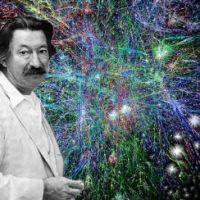
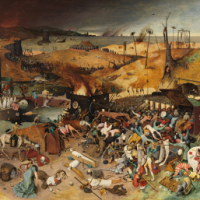
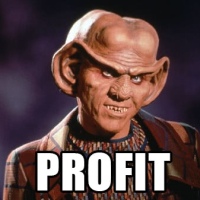
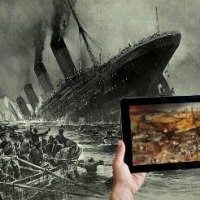

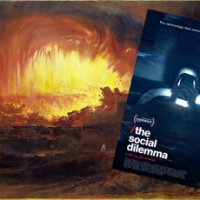
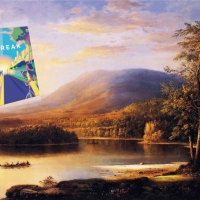


Pingback: Be Afraid! But not that afraid? – on Climate Doom | LibrarianShipwreck
Pingback: The Sky Isn’t Falling – Franzen still has much to learn | LibrarianShipwreck
Pingback: In Defense of Jonah | LibrarianShipwreck
Pingback: The Climate of Despair – Climate Change, COVID-19, and the Feeling of Impending Doom | LibrarianShipwreck
Pingback: Look Around – Yet Another Piece about “Don’t Look Up” | LibrarianShipwreck
Pingback: Singing About the Dark Times – Theses on Doomerism | LibrarianShipwreck
Pingback: If Only Beating Climate Change Was This Easy – A review of the boardgame Daybreak | LibrarianShipwreck